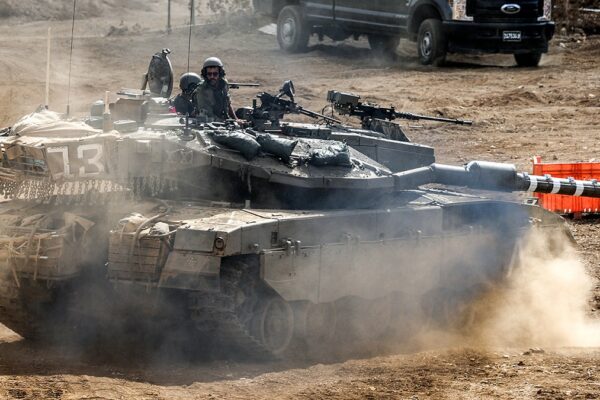Rising from the ashes: Israelis in nation’s war-torn south move home a year after October 7 massacre
Before October 7, the communities of the mostly agricultural cooperative settlements, commonly known as kibbutzim, near the Gaza Strip, were considered some of the most picturesque places in Israel, characterized by green fields and carpets of vibrant red anemones. Yet, they were also among the most bombarded areas in the country. “Ninety-nine percent of the time, it’s paradise; one percent of the time, it’s hell,” was a common saying among residents.
“It’s fair to say this year, we live in that one percent” Ofer Liberman admits, reflecting on the harsh reality faced by his community. For 22 years, he has served as the spokesperson for Kibbutz Nir Am, nestled in the Gaza envelope.
On October 7, it was Liberman’s daughter, Inbal, the community’s security coordinator, who displayed remarkable courage. She opened the weapons storage lockers and distributed arms to the community’s rapid response team, sending them to various locations along the kibbutz fence. She and the team engaged in face-to-face battles with Hamas terrorists. Her quick actions prevented them from entering the kibbutz and prevented a massacre similar to what occurred in neighboring communities.
ISRAEL’S MILITARY SAYS FORCE IS ‘AT WAR’ WITH HAMAS AS IDF HITS BACK AT TERROR TARGETS
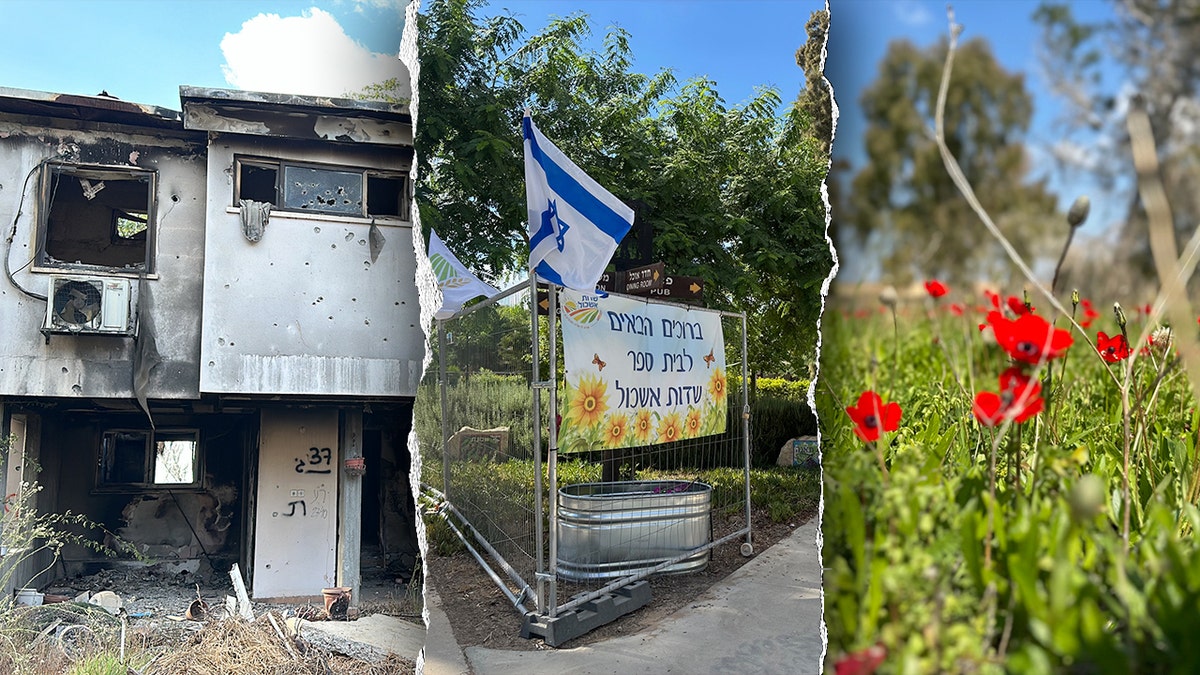
Ruins of burnt out housing on Kibbutz Kissufim after Oct 7, 2023| A sign on a school at Kibbutz Gvulot nearly a year after the terror attacks| fields of Anemones at Kibbutz Nahal Oz. (Efrat Lachter)
On Wednesday, during Rosh Hashanah, the Jewish New Year, Liberman celebrated with his family back in Kibbutz Nir Am. “My wife and I were the only ones to come back in mid-November, while the kibbutz was under full military control. I manage the agriculture in Nir Am, and I had to be here. By the end of March, a small number of families returned, and on August 15, when government funding ended, everyone returned except for 12 families,” he recounted.
“This was a sad holiday; some of our friends still have family members and friends held in Gaza. In the morning, we were informed by the IDF there would be loud noises coming from their fighting in Gaza,” Liberman described the ongoing tension in the region. “People got anxious because it reminded them of October 7 — the booming and gunfire. But we’re managing a routine. People go to work, and children go to school, living my life completely, with sounds of war.”
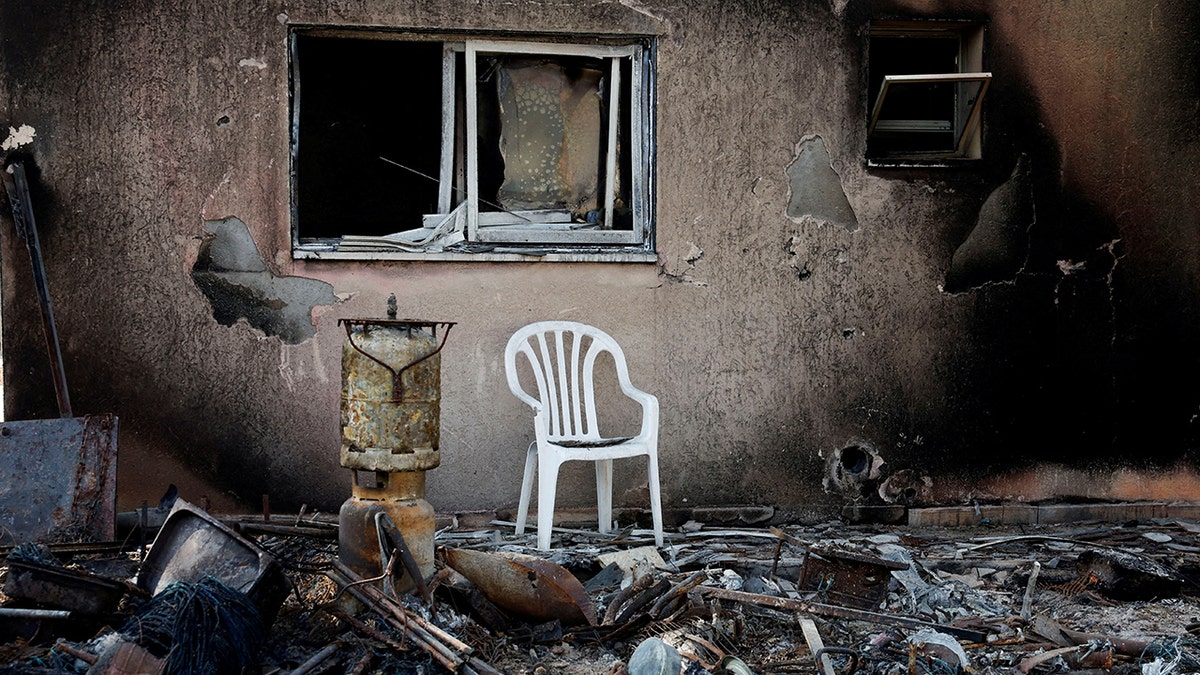
A view shows a destroyed home riddled with bullets, following the deadly October 7 attack by Hamas terrorists from the Gaza Strip, in Kibbutz Kfar Aza, southern Israel on November 2, 2023. (REUTERS/Evelyn Hockstein/File Photo)
After October 7, 15,000 people were evacuated from the 21 kibbutzim in southern Israel, first to hotels and then into temporary housing across the country. Remarkably, about 70% have returned home, a significant achievement considering the ongoing war in Gaza and the devastating impact of the attack, which claimed the lives of some 1,200 people, 319 of whom were kibbutz members, and destroyed hundreds of homes.
FEDERAL AUTHORITIES ISSUE WARNING AHEAD OF OCT. 7 ATTACKS ANNIVERSARY
However, six of the communities where the impact was most severe have yet to return. In Kibbutz Be’eri, 98 men, women, and children were murdered, and 30 were kidnapped. In Kfar Aza, home to 700, 64 people, including women and children, were massacred, and 19 were taken hostage. In Nahal Oz, a small community of 450, 15 were killed and 8 were kidnapped.
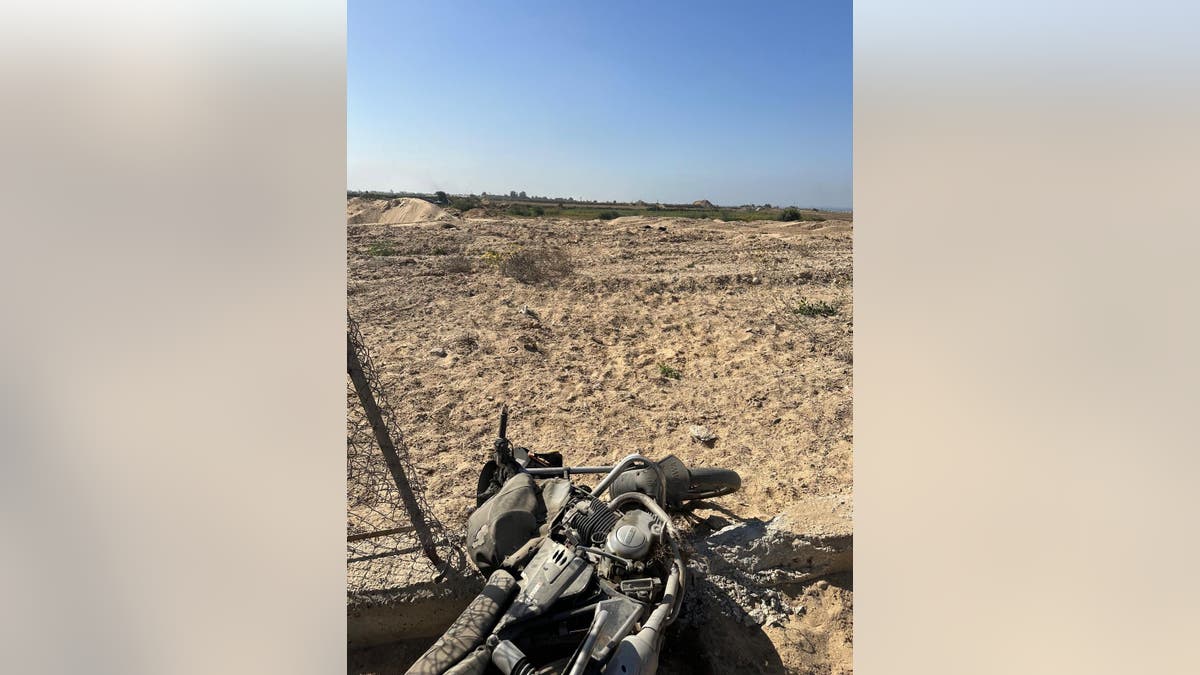
The remains of a motorbike of a terrorist who tried to invade Kibbutz Nir-AM. The terrorist was shot dead by the Kibbutz’s rapid-response team. (Eden Lieberman)
“Only twenty members of Kibbutz Nahal Oz have returned to the kibbutz, while 330 residents — eighty percent of our community — are in Mishmar Ha’emek, a kibbutz in north-central Israel. They’ve been hosting us since October 8,” Amir Tibon, a resident of Nahal Oz, told Fox News Digital. “Being together as one community in this temporary housing has been significant, as we are surrounded by the people we love. Our children still go to school and kindergarten together, which makes a big difference.”
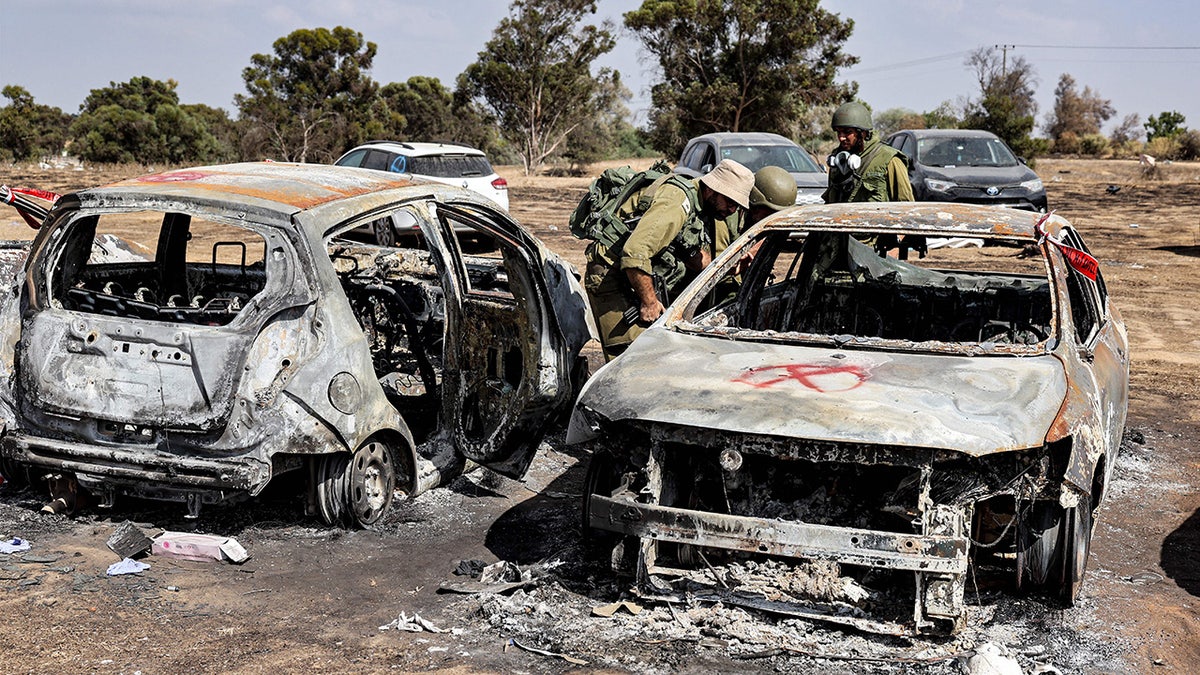
Israeli army soldiers search the remains of a torched vehicle for forensic evidence at the site of the October 7 attack on the Supernova desert music Festival by Palestinian terrorists near Kibbutz Reim in the Negev desert in southern Israel on October 13, 2023. The rave event had drawn thousands of party-goers from October 6 to the desert site close to Kibbutz Reim, less three miles from the Gaza Strip. But it turned into a horror show early the next day when Hamas militants crossed the border on motorcycles, vans, speed boats or paramotors, launching their surprise offensive on Israel. ((Photo by JACK GUEZ/AFP via Getty Images))
On October 7, Tibon and his wife Miri were rescued along with their two younger daughters, thanks to his mother Gali, and father, retired IDF Major General Noam Tibon, who drove from Tel Aviv to the kibbutz to rescue them. On their way, they rescued survivors of the music festival massacre and helped wounded Israeli soldiers. Hours after leaving his home in Tel Aviv, Amir’s father battled a Hamas terrorist in Nahal Oz and saved his family. Tibon later chronicled his experiences in his new book, “The Gates of Gaza: A Story of Betrayal, Survival, and Hope in Israel’s Borderline,” where he intertwines his personal story with the history of the kibbutz.
FOREIGN SURVIVORS OF BRUTAL HAMAS ATTACK ON ISRAEL RECALL TERROR MASSACRE: ‘EVERYTHING WAS BURNING’
“The kibbutzim’s key role in the history of Israel, in creating and protecting the borders of Israel, remains crucial. This way of life, with a strong emphasis on community and togetherness, is more important now than ever,” Tibon believes.
“A kibbutz can be understood as a microcosm of collective living, where community, equality and shared labor play vital roles in the daily lives of its members,” Ayelet Harris, head of the community division in the Kibbutz Movement, said of the leadership dynamics in these communities.
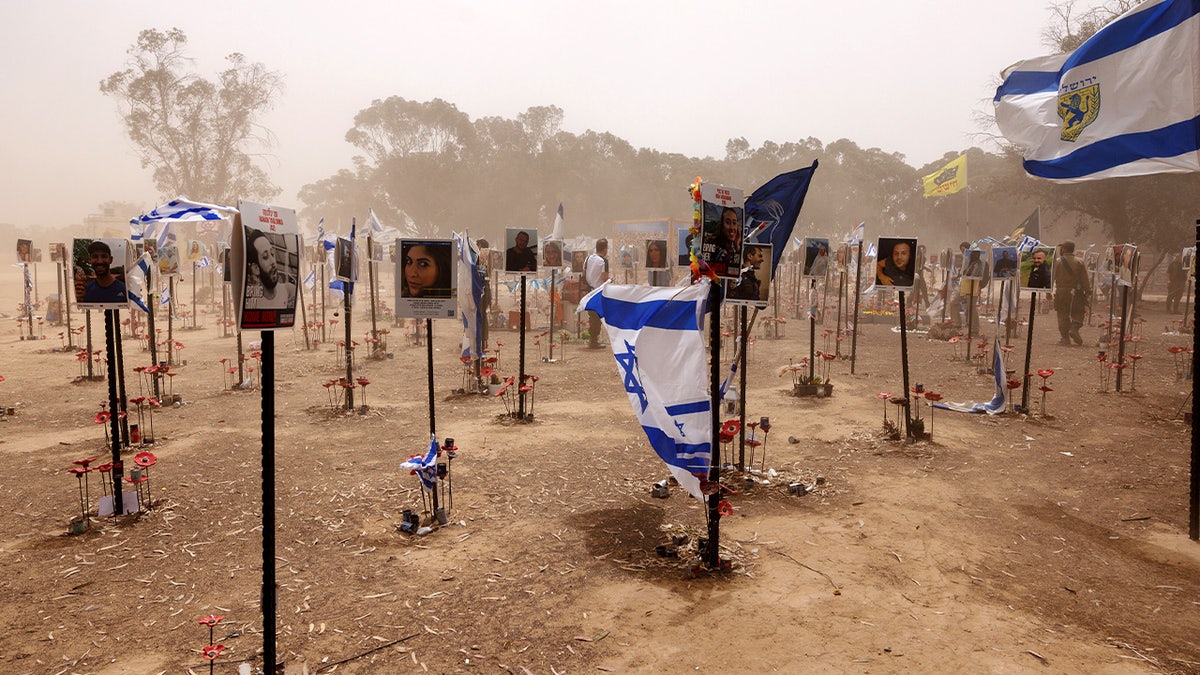
Memorials at the site of the Oct. 7 Hamas terror attack on the Supernova music festival near Kibbutz Re’im, Israel, on Monday, May 27, 2024. (Kobi Wolf/Bloomberg via Getty Images)
“The Kibbutzim institutional structure has been crucial in the process of recovery. I saw women and men leading their kibbutzim and prioritizing the mission of returning, even in uncertain times. They decided to focus on the mission of going, working through their emotional states while being part of the teams planning the return. This sense of ownership fosters a deeper sense of belonging than in other places where people feel less influence over future plans.”
Tibon reflected on the complexities surrounding the decision to return home. “This is a conversation we have every day. The issue is about the sense of security that the government and IDF must provide, and overcoming the psychological barriers of returning to a place where such horrors occurred.”
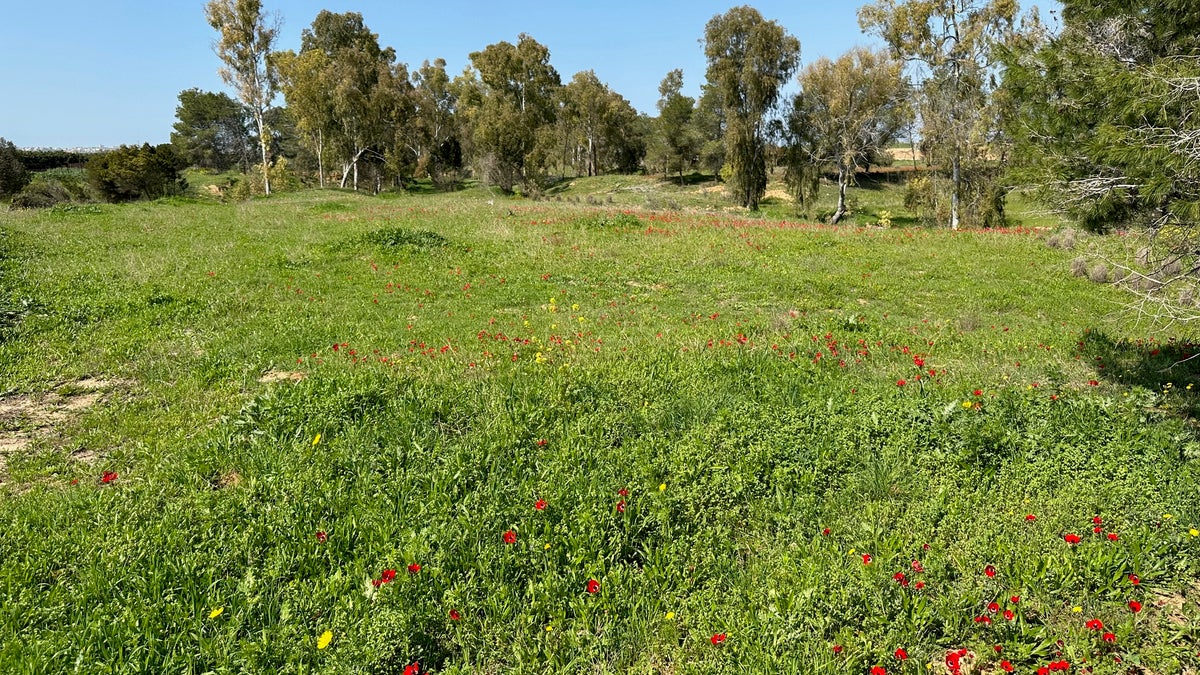
Fields of anemones grow in Kibbutz Nahal Oz. (Photo: Efrat Lachter.)
The ongoing trauma is compounded by the uncertainty of their friends and family who remain in Hamas captivity. “We received five of our hostages back alive in November, thanks to a deal orchestrated by President Biden. But we still have two friends, Omri and Zachi, in the hands of the enemy,” Tibon explained. “For me, going back to the kibbutz means living in a house where a neighbor was killed in the house in front of me, and another neighbor was murdered in the house behind. This is where I will raise my daughters. I believe I can do that, but I don’t know if I can pass by the homes of these two friends and know they were left to die in the tunnels of Gaza.”
VIDEOS OF HAMAS BRUTALITY TOWARD ISRAELIS EERILY REMINISCENT OF ISIS TACTICS
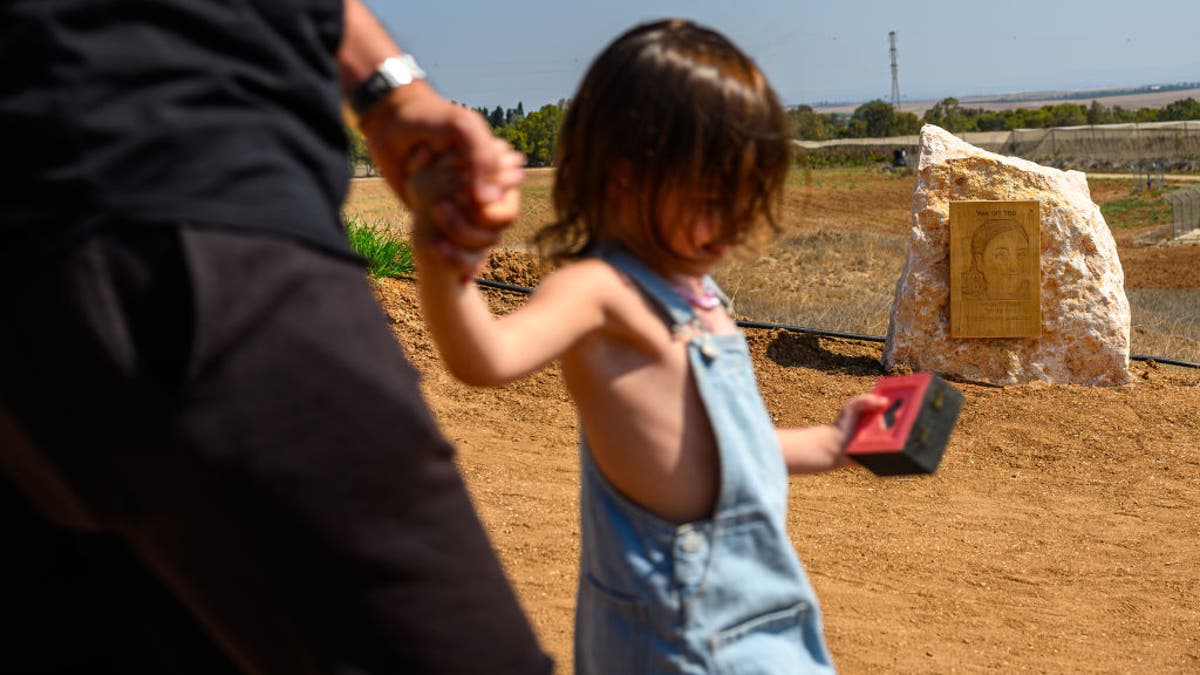
A girl and her father walk past a boulder and photo for the killed soldier Roni Eshel at a new memorial for the surveillance soldiers killed on October 7th during the attack on the Nahal Oz base on October 4, 2024, near Nahal Oz, Israel. On the morning of October 7, the Nahal Oz base was attacked by Hamas terrorists, where 66 soldiers were killed, including 15 female soldiers who operated surveillance cameras. Some of the female soldiers who were not killed were taken hostage on October 7, 2023. (Alexi J. Rosenfeld/Getty Images)
Last week, while walking around Kibbutz Gvulot, the contrast between the children’s laughter and the reality of their lives was striking. Children played soccer on the grass, joyfully unaware of the shadows cast by the shelters positioned every few meters, decorated with pictures of beloved cartoon characters. The regional school at the center of the kibbutz has been improvised from structures that existed prior to October 7.
“After the attack, we found ourselves in a hotel in Eilat with a large part of the traumatized community of the south,” Lior Dafner, the chairman of Kibbutz Gvulot, recalls. “Every day we received news about more people we knew being kidnapped or murdered- a truly incomprehensible situation.” Kibbutz Gvulot was one of the very few places that were not raided during the October 7 massacre.
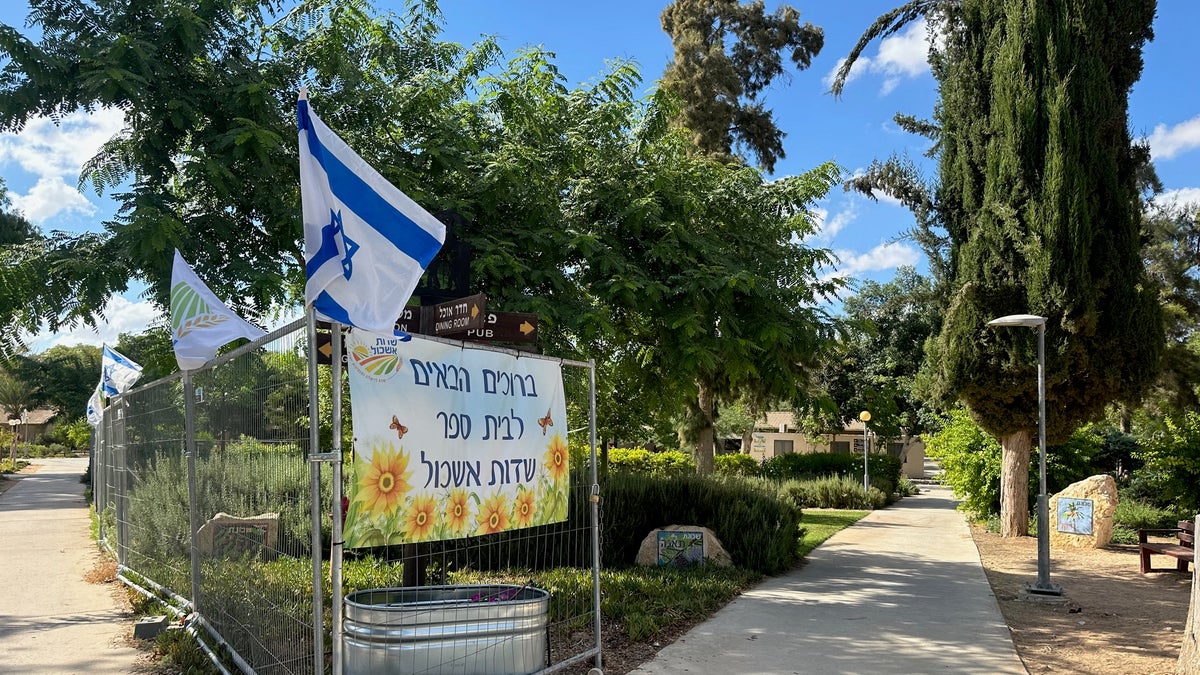
The sign at Kibbutz Gvulot school reads, “Welcome to Sedot Eskhol school.” The school reopened last month. (Efrat Lachter)
“You see a slow deterioration of people into helplessness; there are no frameworks for children. We realized we needed to establish ourselves and figure out where to go next. We wanted to ensure that the children and staff started the year on September 1, like all children in the country, and finish on June 30, in the same classroom with the same teacher and group of kids—all in a safe and stable environment. After everything they’ve been through, losing friends and teachers, seeing them now in school gives us hope. This is the future. It gives us hope for what lies ahead,” Dafner said.
CLICK HERE TO GET THE FOX NEWS APP
Throughout the communities that are back in their homes, there is a call for resilience despite the challenges. Liberman said, “I think we had to return here and hold this place. We need to preserve our country. I was just in New York, sitting with Jews who lamented that they are not in Israel. You see the synagogue surrounded by police protecting them because they are afraid. We, the Jewish people, are unwelcome anywhere in the world. So, we have no choice but to remain in our state. I hope that after the fighting in the south and north ends, and once we bring our hostages home, we can return to living that ninety-nine percent of paradise.”




